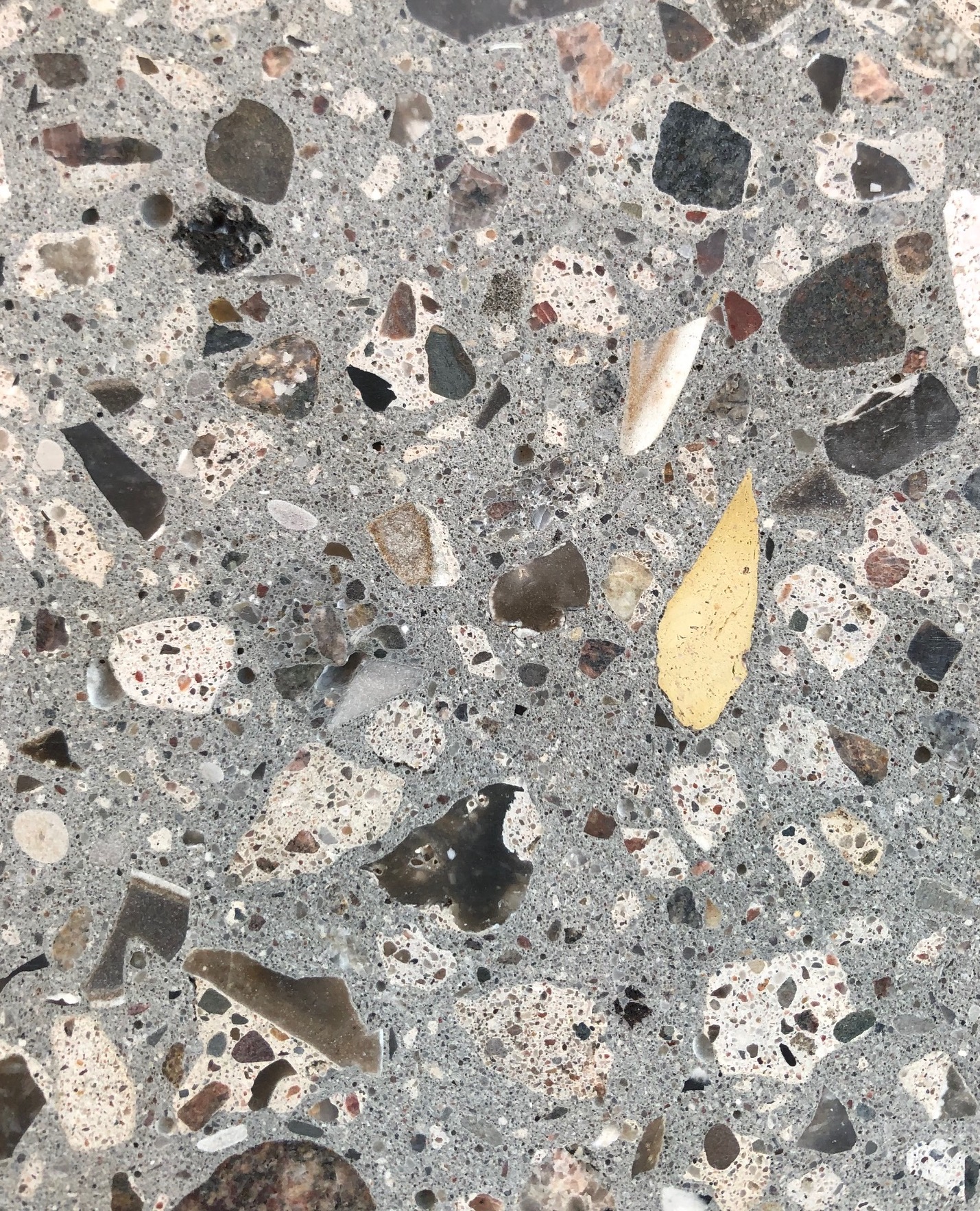Aesthetics, culture & the sustainability of concrete:
The role of architects & design in the development of sustainable visual concrete
Research and development
2019 - ongoing
‘Only a fraction of the worlds concrete is touched by architects, but their impact on the medium has been disproportionate to the very slight control they have over the totality of what is built the world over. As the cosmeticians of concrete, architects are responsible for mediating concrete to us for causing it to be seen in one way rather than another: it is architects, more than any other trade or occupation who are most involved in bringing our longings and loathings through the material, in giving expression to all the things that we either believe, or refuse to believe about concrete and the world within which it is used’
Adrian Forty,
Concrete and Culture
Der er kun ét materiale mere udbredt end beton, og det er vand, hvilket gør beton til verdens mest anvendte menneskeskabte materiale. Produktionen af cement og dermed beton bidrager med CO2-emissioner svarende til verdens tredjemest forurenende land. Relationen mellem beton og bæredygtighed er polariseret. Et dårligt ry er ikke nyt for beton; dette ældgamle og moderne materiale har altid fremprovokeret voldsom debat, mens det undslipper endnu definition eller klassifikation.
Ingeniører, producenter, kemikere og videnskabsfolk befinder sig i et kapløb for at finde nye former for bæredygtig beton. Dette omfatter ikke kun cementudskiftninger med lavt kulstofindhold - som allerede inkluderer alt fra biprodukter fra stålproduktion til gulerodsfiber til hamp - men også andre typer af aggregater, overskudsmaterialer fra bygge- og nedrivningsprocesser og dets evne til at blive genanvendt. Dog er betonens virkning på kulturen, arkitektonisk og æstetisk, stort set fraværende fra de mest relevante studier om emnet.
Dette projekt søger at undersøge, hvordan arkitekter som "kosmetikere af beton" kan være mere involveret i udviklingen af dette essentielle materiales fremtid. Designet, og dermed arkitekter, af den synlige beton er afgørende for at give fremtidens bæredygtige beton en ny fortælling.
Hvordan kunne bæredygtig beton se ud? Hvordan skal beton se ud for at blive kulturelt accepteret som et bæredygtigt materiale? Hvad er arkitekters rolle i at fremdyrke et arkitektonisk udtryk til bæredygtig beton? Hvor meget af dette afhænger af æstetik, og hvor meget afhænger af politik og bygningsreguleringer?
Vi foreslår, at æstetik, kultur og materialets regionalisme er lige så, hvis ikke mere, afgørende for betons bæredygtige fremtid end de kemiske processer ved dets produktion. Vi har udviklet dette projekt med det formål at inddrage arkitekter såvel som slutbrugere i skabelsen af en bæredygtig kultur i brugen af beton. Vi søger at påvirke måden, hvorpå beton (eksisterende og ny) er designet og opfattet. Vi håber, at vores resultater kan påvirke og inspirere betonbrugere over hele verden og argumentere for de nødvendige ændringer i design, konstruktion og af nutidens brug i det byggede miljø. Vi omfavner æstetikkens subjektivitet kontra ingeniørvidenskabens nøgterne empiri. Vi håber, at vores forskning og mock-ups vil generere svar på, hvordan bæredygtig beton kan se ud, mens vi i samme vending forhåbentlig afmystificerer det en smule.
There is only one substance more prevalent than concrete and that is water, making concrete the world's most used man-made material. Cement and concrete production contribute carbon emissions equivalent to being the world's 3rd most polluting country. Concrete's relationship with sustainability - as with most things concrete - is a polarized one. A bad reputation is not new to concrete, this ancient and modern material has always provoked vicious debate whilst escaping definition or classification.
Industry professionals, engineers, manufacturers, chemists and scientists are in a race to find new forms of sustainable concrete. This covers not only low-carbon cement replacements – which already include everything from steel manufacture by-products to carrot-fibre to hemp – but also aggregates, resources used in the construction and demolition processes, and its ability to be reused. However architecture, aesthetics and the effects of concrete on culture are largely absent from the most relevant studies on the subject
This project seeks to investigate how architect's as the 'cosmeticians of concrete' can be more involved in developing this essential material's future. Architects and the design of visual concrete are integral in giving sustainable concrete its new face(s).
How could sustainable concrete look? How should concrete look in order for it to be culturally accepted as a sustainable material? What is the role of architects in giving architectural expression to sustainable concrete? How much of this is dependent on aesthetics and how much is dependent on politics and building regulations?
We propose that aesthetics, culture and material regionalism are as (and if not more) integral to concrete’s sustainable future than the chemical processes of its production. We have developed this project with the aim of engaging architects as well as end-users into the creation of sustainable concrete. We seek to affect the way that concrete (existing and new) is designed and perceived. We hope our findings can influence and inspire concrete-users worldwide and advocate for the necessary changes to the design, construction and occupation of the built environment. We embrace the subjectivity of aesthetics versus the empiricism of engineering. We anticipate our research and mock-ups to generate many answers to what sustainable concrete looks like whilst demystifying it just a little.


